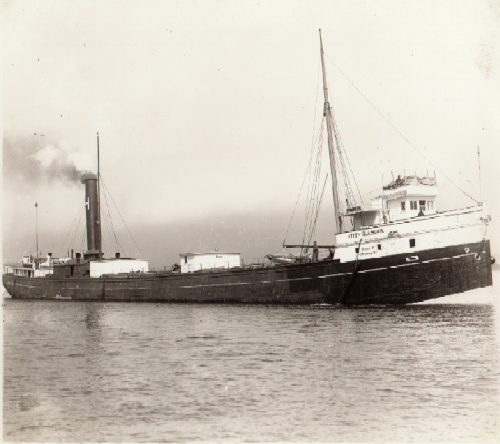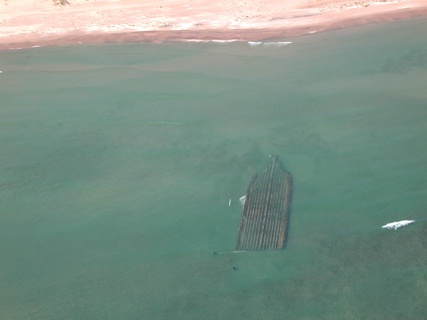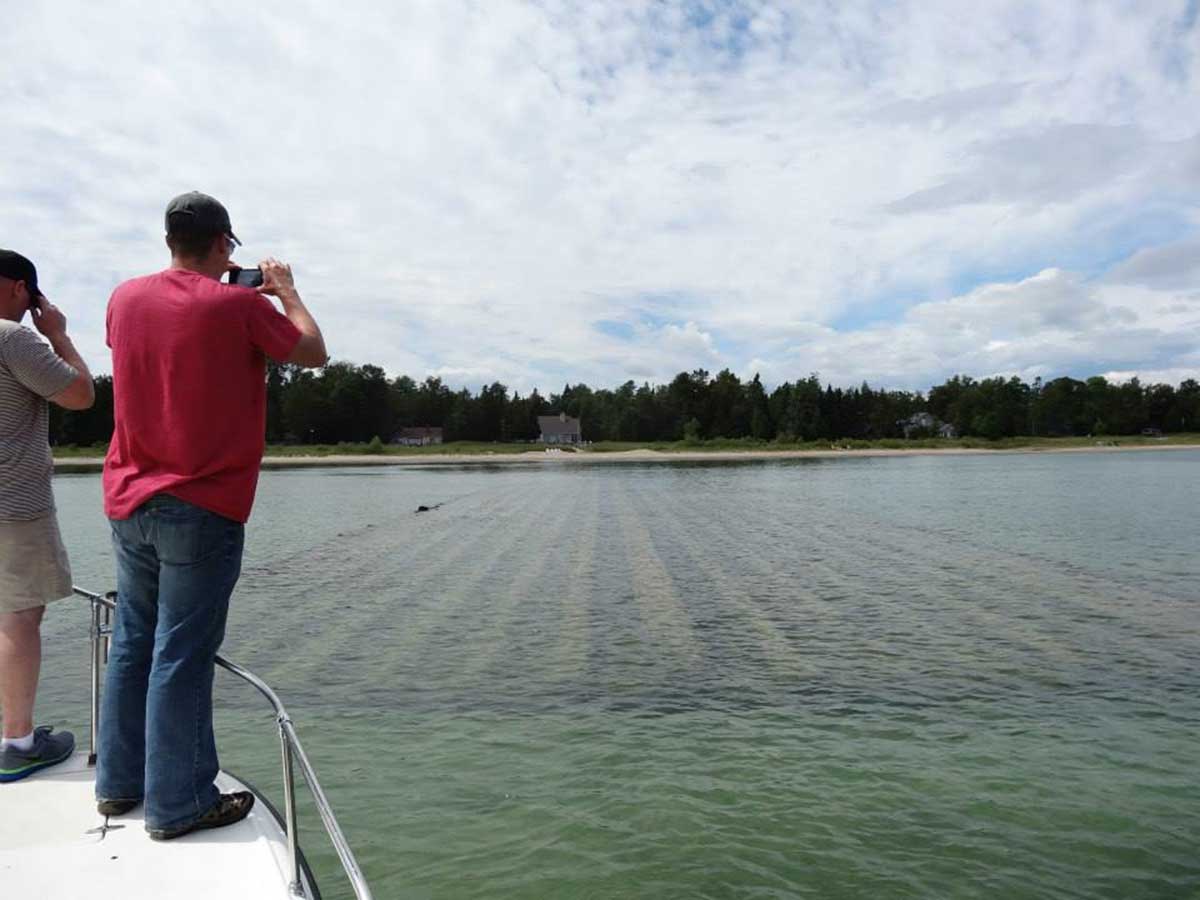Service History
The
City of Glasgow started her life as one of the largest Great Lakes wooden freighters carrying bulk cargoes such as coal. The vessel was built in 1891, launched on May 16th, and continued in various trades until 1907. She had been rebuilt several times over her life, the first time was in 1901.
In November of 1907 the
City of Glasgow was stranded on the Peshtigo Reef in Green Bay. She was released, but ran aground again a few days later not far away. Then, a fire broke out and she burned to the waterline, sinking and blocking navigation in and out of the port of Green Bay. The Leathem and Smith Towing and Wrecking Company was awarded the contract to remove the hulk by spring. After much trouble, the Leathem and Smith Company managed to move the
City of Glasgow to the city of Green Bay where her machinery was removed and her stern was cut off. They then towed her to Sturgeon Bay where she sat until 1910.
Finally, after a year of work, mainly dealing with the gutted aft section of the vessel, Leathem and Smith finished converting the
City of Glasgow into a crushed stone barge. From this point on she was typically referred to as the
Glasgow and was usually in tow of the Leathem and Smith tug
John Hunsader carrying limestone and occasionally coal.
Final Voyage
The stone barge
Glasgow, the former
City of Glasgow, was used extensively by the Leathem and Smith Towing Company to haul limestone from their Door County stone quarry. On October 6,1917, the tug
John Hunsader was towing both the
Glasgow and the self-unloading
Adriatic into Sturgeon Bay during a strong storm blowing out of the south. The three vessels were approximately two miles from the ship canal when the tow line from the
John Hunsader broke leaving the
Adriatic and the
Glasgow on their own still tied together. The
Adriatic dropped her anchors to try and ride out the storm. The Sturgeon Bay Coast Guard rescued the crew from the
Glasgow but not the crew of the
Adriatic. The following morning found the
Adriatic grounded but otherwise ok. The
Glassgow was hard on the beach. Several days of work freed the
Adriatic which was repaired and returned to service, but the
Glasgow was a different story. She was pumped out, but a number of attempts to free the vessel proved futile. After years of ice, wind and wave damage, the
Glasgow was officially abandoned in 1922.
Today
After the
City of Glasgow grounded she broke into two large pieces along the hull where previous repairs had been made. These sections are still in existence and can be accessed by divers. The anchor and chains had been salvaged but parts of the hull, such as framing and planking along with some rigging remains. These can be found in about ten feet of water roughly 100 yards from shore in Lily Bay, three miles north of the Sturgeon Bay Ship Canal.
A dive guide for this vessel is available for purchase.




 Confirmed Location
Confirmed Location
 Unconfirmed location
Unconfirmed location